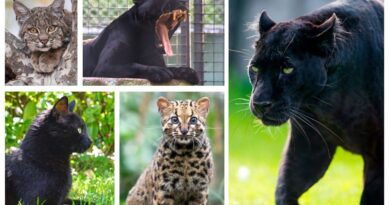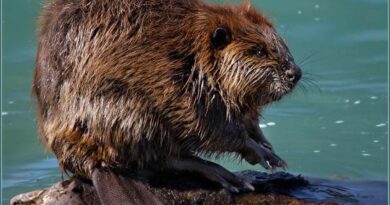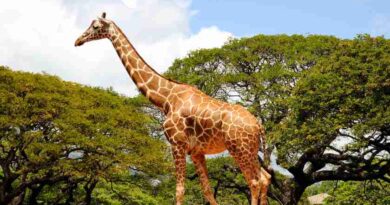CHEETAH
A long time ago, years argued about whether the greyhound or the cheetah could run faster. The greyhound is the fastest dog and the cheetah is the fastest cat, but if they were to race against each other, who would win? The answer isn’t easy to find because the greyhound is a dog that is used to racing around tracks and the cheetah is a wild animal that is used to living in the grasslands of tropical Africa.
Some cheetahs were so tame that they could run on a city racetrack, which is hard to find. They were taken to London in 1937, and everything was ready for the big race. When they saw that the cheetahs didn’t like the tight turns on the oval-shaped track, the dog owners were sure that their dogs would win. They looked at their stopwatches and were happy to see that their best greyhound had averaged almost 37 miles per hour. But when they timed the fastest cheetah, they were shocked to find that it was much faster and had gone just over 43 miles per hour. The best dog lost to the best cat.
If the race had been held on the open plains, the difference would have been even bigger because their cheetahs can run up to 50 to 60 miles per hour, which is very fast. In fact, nothing else on four 1egs can compete with the cheetah. It is the best at running fast of all the animals.
This is happening for a special reason. Other cats, from tigers to tabbies, like to sneak up on their prey and hide until it’s too late. Then they make as fast as they can for as short a distance as possible. The cheetah has to look for hunting in a different way. It lives on the plains, which are much harder to hide in. It may wait quietly for prey at the start of a hunt, blending in with its surroundings thanks to its spotted coat, but it rarely gets very close. Once it comes out of hiding, it has a long way to go before it can catch up to its victim. The average cheetah run is about 200 metres.
Its shape fits well with this active way of life. It has a long, thin body, long legs, and a long tail that helps it stay balanced. It has a small head, and its ears are round and short. It is the only cat that can’t put its claws back into its feet. Like a dog’s, they are sharp and always easy to see. They help the animal get a better hold on the ground when it is running. When the cheetah is successful and catches its prey, which is usually a quick-moving antelope or gazelle, it knocks it down with one of its front legs. When this happens, the prey is moving so fast that the force of the blow throws it hard to the ground. The cheetah then skids to a stop, jumps on it, and grabs its throat with its teeth. At this point, the hunter stops and holds on tight to the neck of the prey. This makes it hard for the victim to breathe, and it dies quickly from suffocation. From the beginning of the chase to the moment of death, everything happens very quickly.
If the successful hunter is a mother cheetah with half-grown cubs, she will share her kill with them. This means that she can’t always eat it where she puts it down. If she can, she will drag the body to a nearby bush so that the family can eat there without being watched by other killers and out of the hot sun.
Smaller cubs aren’t allowed to follow their mother when she is hunting. When she goes out to find food, they have to stay hidden in a patch of long grass or undergrowth. They must stay hidden and be quiet until she comes back. Every few days, she moves them to a new hiding place by gently but firmly carrying them in her jaws, one at a time. Cheetahs only have one parent, and the mother takes care of all the responsibilities on her own. When they are very young, the cubs are delicate creatures with beautiful silver manes of hair that run down the middle of their backs. Most of the time, there are three of them in a litter. At birth, they can put their claws away just like any other cat. They only stop being able to do this after about ten weeks. About the same time, their silver manes start to fall out. Soon, they look just like their mother, but smaller.
About three months later, they stop drinking their mother’s milk. When they are two years old, they will be able to start having their own babies. Cheetahs have never been able to have babies in captivity until recently. In 1960, in Germany, the first successful breeding in a zoo happened. This is true even though royal princes and other powerful rulers have kept cheetahs as hunting companions for more than 5,000 years. All of the first “pet” cheetahs had to be caught in the wild and trained to be friendly.
In the past, cheetahs were caught and trained every year. Then, they were taken on royal hunts to chase antelope or other prey. They were hooded like eagles until the last moment. When the prey was spotted, the hoods were quickly removed, and the “hunting leopards,” as they were mistakenly called, were allowed to charge after their fleeing victims.
If each king or prince had only taken one or two cheetahs to hunt with, there wouldn’t have been much to worry about. But rulers are often greedy and want to show off in front of their friends and rivals. Because of this, they kept huge stables full of cheetahs that had been caught in the wild. Each man wanted to be better than the other. One great ruler said that at any given time, he kept more than a thousand cheetahs in his beautiful stables. No wonder the number of cheetahs has dropped so much over the years.
Cheetahs used to be common on the open plains of Africa, the Middle East, and some parts of Asia, but now there aren’t many left. It has been more than forty years since a wild one was seen in India, so it is likely that they are all spotted for good. The Indian cheetah’s last moment was a sad one. One dark night, a local official was driving down a country road in his car when he saw three of these beautiful cats, who were blinded by his headlights. He stopped his car, got out, and shot them without any trouble. India would never see again. It is also nearly extinct in the Middle East and western Asia, but there may still be a few left in the most remote places where people rarely go. Anyone going on a safari vacation in Africa can still see it in the game parks. But even there, it’s happening less and less.
The problem with the African cheetah today isn’t that it’s being hunted, but that it’s too popular. When people go to Africa, they all want to see these beautiful cats. To make their guests happy, the guides spend hours driving around in their minibuses looking for them. As soon as they see one, they follow it as closely as they can while the tourists take pictures from the bus windows. If the cheetahs are sleeping, this doesn’t cause any problems, but if they are hunting, it’s easy to wake them up. Things are going from bad to worse. Because there are so few cheetahs and so many tourists, there are some places where the animals can’t catch and kill their prey because minibuses drive by them from dawn to dusk and never leave them alone. Even though the people who visit them don’t want to hurt them, it’s them, not hunters, who are driving the cheetah away from its old haunts on the plains of Africa.
The last time anyone counted, there were still 25,000 cheetahs in all of Africa. This may sound like a huge number, but when you think about how big Africa is, it doesn’t seem so big. We must make it from going any lower.


